#Alexander Kellas
Explore tagged Tumblr posts
Text

Am Fear Liath Mór, or the Big Grey Man of Ben MacDhui [Scottish cryptid]
The high passes of Ben MacDhui – the second largest mountain in Scotland – are haunted by tales of a mysterious creature that supposedly stalks hikers. Usually it is described as an impossibly tall, grey spectre, thereby earning it the name ‘Am Fear Liath Mór’, meaning ‘the big grey man’.
The story starts in 1891 with professor Norman Collie of the Royal Geographic Society, who happened to be a passionate hiker as well. The professor had just climbed the cairn on the summit of Ben MacDhui when he heard something that vaguely sounded like footsteps. I should mention that this area is notoriously misty, so you can imagine how easy it is for a lone hiker to get anxious when hearing strange noises.
The footsteps continued, but they were oddly spaced: for every ‘step’ the professor heard, he himself took three or four. It was as if this mysterious spectre was taking giant leaps or had huge legs. Eventually the professor was overtaken by panic and fled. Much later, in 1925, he recounted his tale and shared it with the newspapers, who were eager to publish and often exaggerate the story of a supposed monster or cryptid living in the Scottish mountains. At the time, the mystery creature was dubbed ‘the Ben MacDhui Ghost’ in the media.
Afterwards, multiple people came forward with claims about the mountain ghost, some of which were believable (hearing unidentified sounds) and some were more fantastic (Richard Frere and Peter Densham claimed to have had a conversation with an invisible, psychic creature).
Richard Frere would later claim that while he was hiking on the top of the Ben MacDhui, he had an unshakeable feeling that someone else was there with him, and he would hear a strange high-pitched noise that seemed to come from the soil beneath his feet.
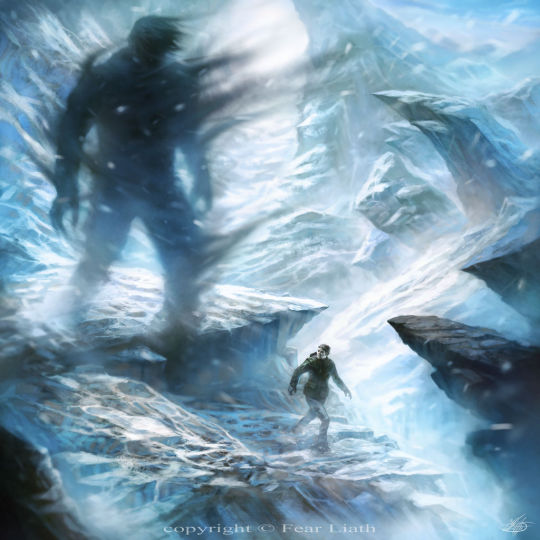
Frere also gave a physical description of a creature he claimed to have seen (but it is difficult to verify whether this is the oldest actual ‘sighting’ of the supposed ghost): a large, brown creature was seen swaggering down the mountainside. It stood about 20 feet (6m) tall, was covered with short brown fur and had a disproportionally large head supported by a thick, muscular neck. It had broad shoulders but walked upright and did not resemble an ape.
Interestingly, only a single sighting happened on a nearby mountain, rather than on the Ben MacDhui itself: in the 1920’s, Tom Crowley, the president of the local Moray Mountaineering Club, claimed to have seen an apparition while descending from Braeriach to the Glen Eanaich. It was a very tall, misty grey figure with a humanoid shape, albeit with long legs that ended in strange talons (described as resembling fingers more than toes) and a head with pointy ears.
Dr. A. M. Kellas, himself a famed mountaineer, also claimed that a giant grey humanoid creature haunted the mountain. Among the many supposed sightings, I am uncertain which one is actually the oldest description of the ‘Grey Man’ as a tall, grey spectre, but it is certainly the most popular one. The grey apparition had cemented itself as a local cryptid and urban legend and many more supposed sightings followed.
Though it is often claimed that the creature is connected to ancient Scottish or Celtic mythology, this is most likely false. Gray Affleck, the author of ‘The Big Grey Man of Ben MacDhui’, attempted to research this link but could not find a single connection with actual Highland mythology.
In 1958, the June edition of ‘Scots Magazine’ told the story of Alexander Tewnion’s 1943 expedition to the mountain. While he was descending the mountain, a giant grey shape suddenly loomed over him. Having none of this bullshit, Mr. Tewnion immediately pulled out his revolver and fired three bullets at the thing. The mysterious apparition seemed not to notice, however, and kept walking towards him, upon which Tewnion fled.
Sources: Barrie, A., 2005, Sutton Companion to the Folklore, Myths and Customs of Britain, The History Press, 480 pp. Gray, A., 2013, The Big Grey Man of Ben MacDhui, Birlinn, 183 pp. (reviewed edition, first edition published in 1970) (image source 1 : Attila Nagy on Artstation) (image source 2: ManthosLappas on Deviantart, ©Fear Liath)
#Scottish mythology#cryptids#urban legends#creatures#mythical creatures#mythology#bigfoot#yeti#humanoid creatures#ghosts
147 notes
·
View notes
Text
Am Fear Liath Mor: The Big Grey Man of Ben Macdui | Scottish Folklore

The second highest peak in the British Isles rises up out of the Cairngorms in Scotland, and holds the name of Ben Macdui(or Beinn MacDuibh). Visiting it’s summit is a notoriously dangerous feat; with the sudden changes in weather taking the lives of many hikers throughout history.
There is also a ghostly fairy that has made this peak famous: Am Fear Liath Mòr.
Also known as Big Grey Man, or Ferlas Mor, this resident of Ben Macdui is most frequently reported by people feeling an eerie presence; such as by an icy sensation in the air or a chilling brush against the skin.

[“Ben Macdui and Derry Cairngorm from flanks of Beinn Mheadhoin” by Peter Hudson ]
Those who have sighted Am Fear Liath Mòr often describe him as a giant that stands over ten feet tall, with long arms and broad shoulders.
One of the most famous accounts comes from Professor J. Norman Collie. In 1891, Collie was navigating through thick mist, when he heard the telltale crunching sounds of steps following behind him…but each of those steps spanned a greater distance than his own by three or four times. Much to his growing dread, this continued until he decided to flee.
Collie’s encounter is not unique. Many climbers have reported similar experiences, including one by Dr. Kellas in 1926. He recounted seeing a figure about the same height as the summit cairn. When he asked a local living nearby about it, the old man replied without any surprise, “Oh, aye. That would have been the ferlas mohr he would have been seeing.”

[“Trig Point on summit of Ben MacDhui” by Eric Sim]
In 1943, climber Alexander Tewnion, encountered a shape emerging from the mist. Believing it to be the Big Grey Man, Tewnion fired three shots at the figure in a panic. The mysterious entity, however, remained unperturbed, prompting him to hastily retreat down the mountain.
"A strange shape loomed up, receded, came charging at me! Without hesitation I whipped out the revolver and fired three times at the figure. When it still came on I turned and hared down the path, reaching Glen Derry in a time that I have never bettered. You may ask was it really the Fear Laith Mhor? Frankly, I think it was." Evening Star, Issue 19159, 28 January 1926, Page 2: HAUNTED MOUNTAIN, A TEN-FOOT GHOST, BEN MACDHUI’S “GREY MAN.” (Quoting Alexander Tewnion from the June 1958 issue of The Scots)
One attempted explanation involves an optical illusion called Brocken Spectre. A Brocken Spectre is an optical phenomenon where an observer’s magnified shadow appears surrounded by a halo-like ring of light on a cloud or mist, typically seen from mountain peaks.
Whether one interprets the experiences of those who have encountered him as supernatural or as mere optical and auditory illusions, the stories continue.
There is one final quote from Always a Little Further by Alastar Borthwick (1939) that I want to share. In it, a man was out with a search-party, and decided to ask the local gameskeepers and stalkers what they thought of “Ferlas Mor.”
They looked at him for a few seconds before one finally stated, “We do not talk about that.”

Further Reading:
Newspaper Articles:
MOUNTAIN GHOST IN GRAMPIAN PASS: Star (Christchurch), Issue 17752, 23 January 1926, Page 8
HAUNTED MOUNTAIN, A TEN-FOOT GHOST, BEN MACDHUI’S “GREY MAN.” Evening Star, Issue 19159, 28 January 1926, Page 2
Books:
Encyclopedia of Beasts and Monsters in Myth, Legend and Folklore by Bane, Theresa (2016)
Scottish folklore by Lamont-Brown, Raymond, (1939)
Always a Little Further by Alastar Borthwick (1939)
A–Z of ghosts and supernatural by Knight, Jan (1980)

Historic Audio Recordings
(link) Track ID: 33273 | Date: 1973 | Title: The Grey Man of Ben Macdui | Language: English
(link) Track ID: 33273 | Date: 1973 | Title: Prògram Choinnich | Language: Gaelic
#scottish folklore#mythology#folklore#scottish mythology#scotland#myths#scottish myths#scottish folkore#cryptid#cryptidzooology#cryptozoology#othertypes#MiscScottishFairies
42 notes
·
View notes
Text
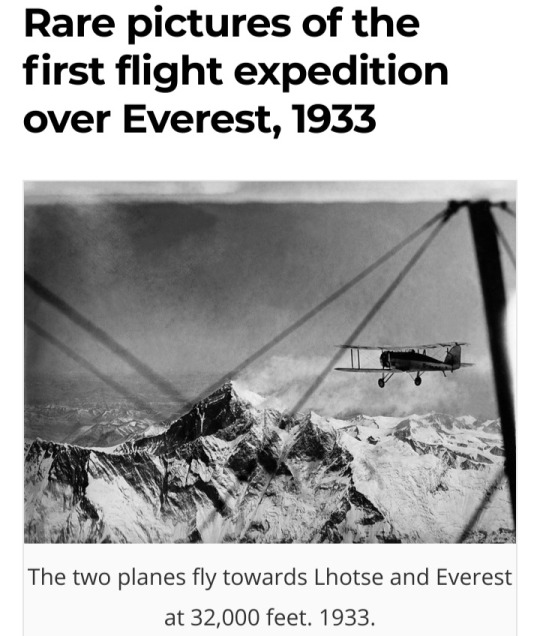
Originally, the idea for a flight expedition over Mount Everest was proposed in 1918 by a British mountaineering physiologist, Alexander Kellas in his journal “The Possibility of Aerial Reconnaissance in the Himalaya.”
As a skilled mountaineer and expert in physiology, Kellas believed that with the right precautions and the right equipment, given time, they could establish a means to not only fly planes competently at such extreme altitudes but also take useful reconnaissance photographs.
However, it would take another 15 years for the technology to catch up.
The attempt could not be made without significant funding and in September 1932, Lord Clydesdale visited Lady Houston at her Scottish shooting estate, Kinrara, to ask her to fund the expedition.
He impressed her by dressing in his kilt for dinner.
The strongly nationalistic Lady Houston was delighted with the idea that Clydesdale put forward, that the conquering of Everest by air would strengthen British rule in India.
She agreed to fund the expedition and would remain closely involved at all stages from England.
In November 1932, the team chose two modified Westland Wallace aircraft for the expedition.
The two-seat aircraft had open cockpits and were equipped with Bristol Pegasus S3 engines.
Lord Clydesdale flew a modified Westland PV-3 accompanied by Colonel Blacker while Lieutenant MacIntyre and Photographer Bonnett followed in a PV-6 model prototype.
Both received modifications, including hearing and oxygen equipment.
Both aircrafts would become the first to fly over Everest.
The planners had to tackle the critical problems of supplying the airmen with oxygen and keeping them warm above 30,000 feet.
With weight a crucial factor, it was fortunate that Vickers Armstrong was able to supply lightweight oxygen cylinders made from a new type of alloy steel.
The movie and still cameras were another heavy addition to the cargo, with each film spool alone weighing 5 pounds.
For protection against the extreme cold, the airmen were outfitted with cumbersome double-layered, electrically heated flying suits, as well as heated gloves and goggles.
The tiny aperture in each airman’s oxygen regulating valve, which was susceptible to blocking by particles of ice or small insects, represented a worrisome vulnerability.
By late March, the expedition was established at Lalbalu Airfield, Purnia, in the northern Indian state of Bihar, about 50 miles south of Everest, ready and waiting for a favorable weather report.
The forecast for April 3 was for winds of 67 mph at 28,000 feet, well above the prescribed limit of 40 mph.
Shortly after takeoff, they encountered a heavy dust haze rising to a great height that completely obscured the ground leading up to the higher mountain ranges.
Some 30 minutes later at 30,000 feet, battling fearsome headwinds, they gained their first sight of Everest.
At one point in the flight, Bonnett felt faint and experienced shooting pains in his stomach.
He paused filming and sat down inside the cabin, where he discovered a gaping fracture in his oxygen line.
He quickly tied a handkerchief around the breach and was able to resume his duties without losing consciousness.
The first expedition could not obtain clear photographs because of dust.
They made another attempt on 19 April 1933, the pictures of which assisted Edmund Hillary and Tenzing Norgay to the top of Mount Everest.
The camera used was a Williamson Automatic Eagle III, which took photographs of the surface at specific intervals as the airplanes flew over known survey locations with the aim of obtaining a photographic mosaic of the terrain and an accurate map.
The photographs of the expedition were made public in 1951.
Their successful flight over Everest made the men heroes.
Lord Clydesdale was awarded the Air Force Cross and Bonnett’s footage was cut into the Academy Award-winning documentary Wings Over Everest.
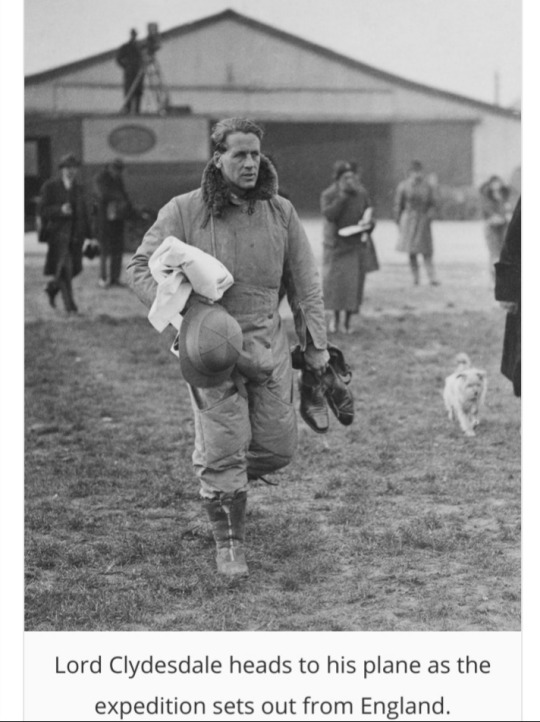

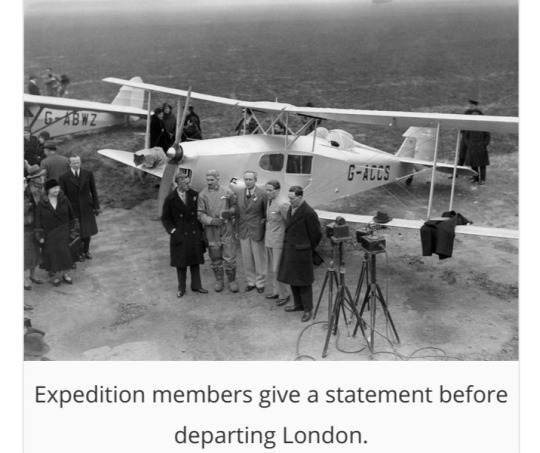
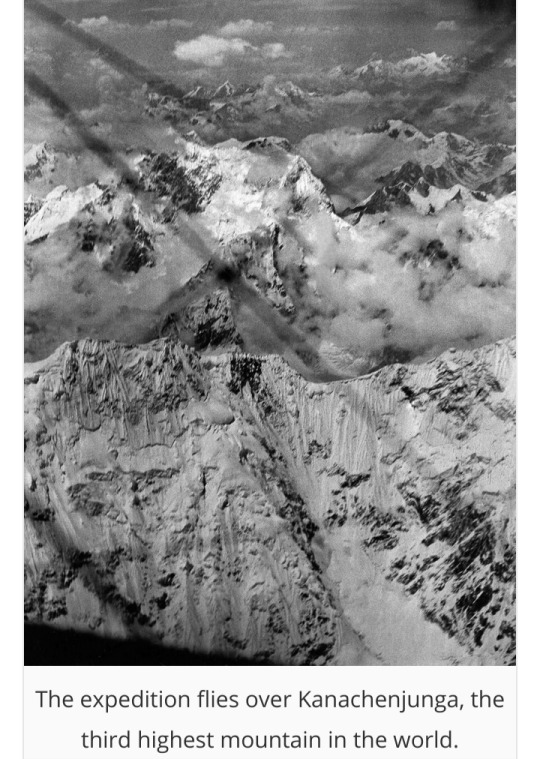
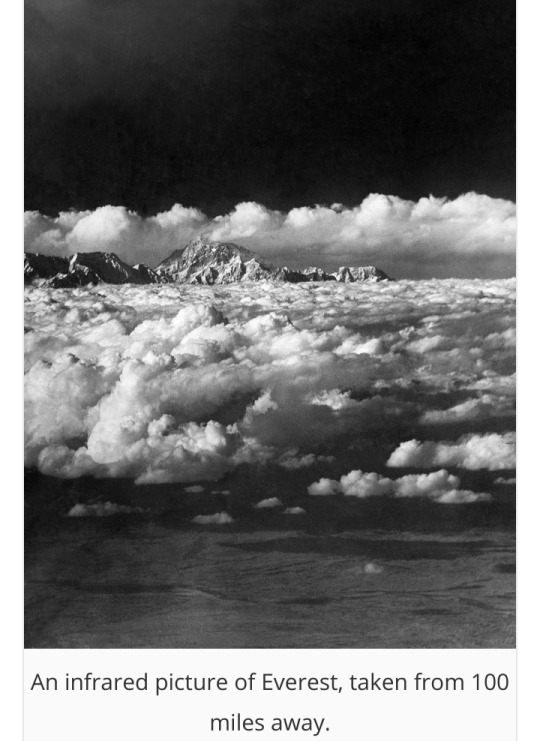
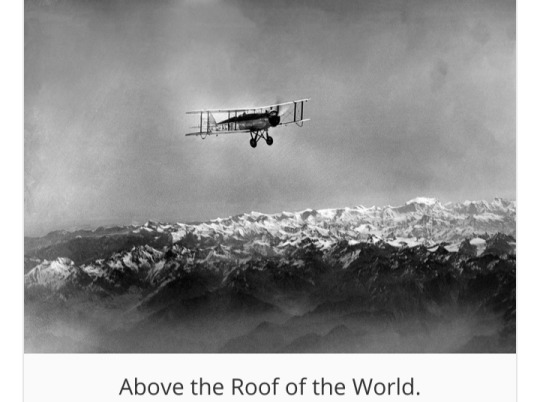

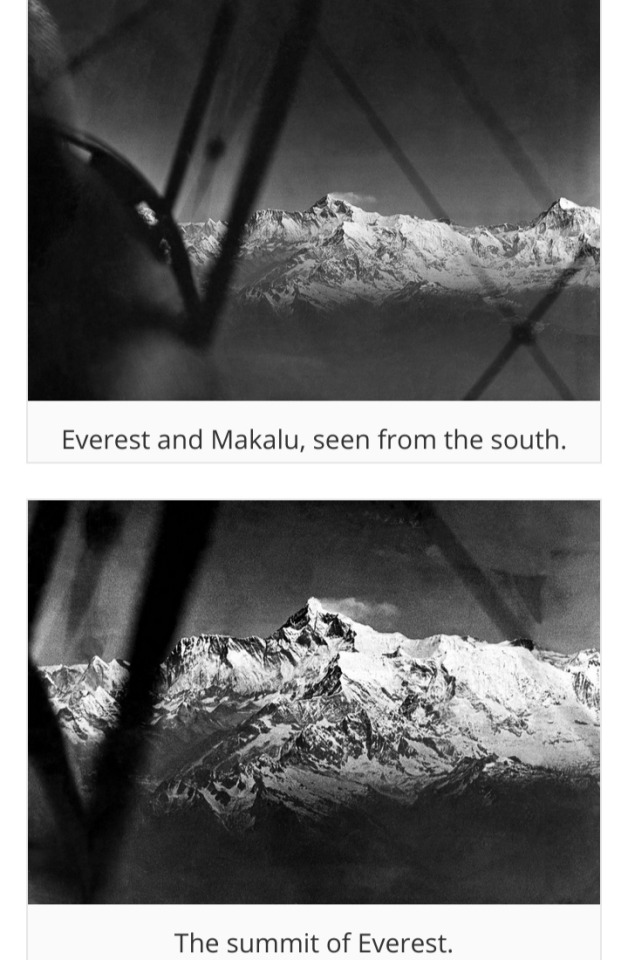
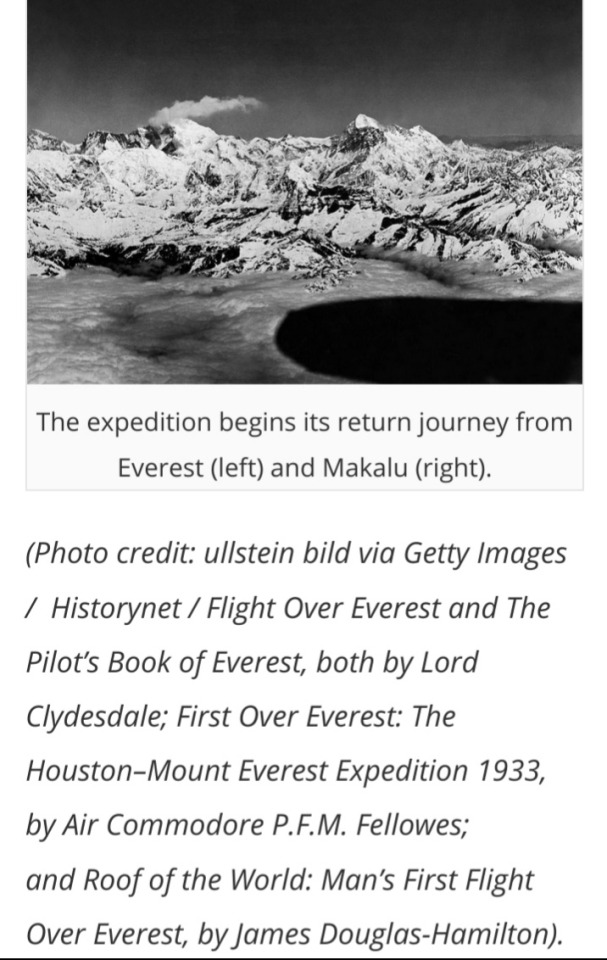
Published on: October 28, 2020
#Alexander Kellas#First Flight Expedition - Everest#Lord Clydesdale#Lady Houston#Westland Wallace aircraft#Williamson Automatic Eagle III
12 notes
·
View notes
Text
girl gang tags
#( iv. alessia pixie )#( iv. cheyanne knight )#( iv. margaery tyrell )#( iv. ambrosia reynolds )#( iv. virginia reynolds )#( iv. stefani lamotta )#( iv. poppy alexander )#( iv. electra black )#( iv. sydney kellas )#( iv. chriselle yeoh williams )
2 notes
·
View notes
Photo
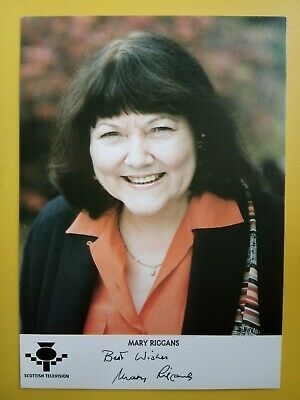



The Scottish actress Mary Riggans was born on July 19th 1935 in Clydebank.
Mary began her acting career in 1946, when she did a voice over at the age of 10, and went on to star in television, radio and theatre productions, the most famous at home is her portrayal of Effie Macinnes, the village gossip and busybody forever looking for an eligible man – but usually losing interest on finding one.
She was cast as Effie three years after Take the High Road began as a daytime soap on the ITV network, but was shown at peak time in Scotland. It was retitled High Road in 1994 and, although the channel had officially dropped it nationally a year earlier, producer Scottish Television continued to make episodes, which many other regional companies showed. Riggans stayed with the serial until it was finally axed in 2003.
By then, she was reaching another generation of viewers with the role of Suzie Sweet, Penny Pocket’s business partner at the village shop and café, in the CBeebies series Balamory. The programme, aimed at children aged six and under and filmed mostly in Tobermory on the Isle of Mull, featured a seaside community of extrovert and colourful characters. Suzie, the flipside to Penny’s business-like character, told stories about various items sold in the shop, Pocket and Sweet, and displayed culinary skills in the kitchen. Both would occasionally burst into song.
Riggans’s acting skills had been on display from a young age. Born in West Dunbartonshire she was 10 when she first acted on radio, in the Scottish edition of Children’s Hour, and the medium remained her favourite throughout her long screen and stage career. She would go on to act in dozens of Saturday Night Theatre productions and read Morning Story. Joyce Grenfell once wrote to her: “If I could write in Scots and make up a good story, I’d get you to read it.”
After leaving North Kelvinside Academy, Glasgow, Riggans gained an MA in philosophy from Glasgow University, where she performed with its drama society. Throughout her education she also continued to act professionally. At the age of 16 she made her television début as Kirsty Kellas in the Robert Kemp play A Nest of Singing Birds.
After university, Riggans gained repertory theatre experience in Perth, performed with a puppet company and worked as an English supply teacher between jobs. From the mid-1960s she was cast in character roles on television. There were parts in plays and one-off appearances in series such as Sutherland’s Law and The Prime of Miss Jean Brodie. Emphasising her versatility, there were also five different roles in Dr Finlay’s Casebook between 1964 and 1970, two in Taggart, in 1983 and 1992 and three in the sitcom Rab C Nesbitt 1988, 1990, and 1992.
In the film Dear Frankie Riggans played Nell, grandmother of the deaf boy whose mother took him on the run to get away from his abusive father. She won the Sony Radio Award as Best Actress in 1983 for her performance as Jean Armour, Robert Burns’s wife, in Donald Campbell’s play Till A’ the Seas Gang Dry.
Her television popularity led to many pantomime appearances across Scotland over the years. She was also in plays at the Royal Lyceum Theatre, Edinburgh, where her roles included the forgiving wife Beatrice in Arthur Miller’s A View from the Bridge and the matchmaker Ustinya in Alexander Ostrovsky’s A Family Affair, as well as touring Scotland in productions.
Off set, Riggans was known for knitting socks for members of the High Road cast. She also enjoyed watching rugby and tennis.
In 2012 Mary Riggans suffered a stroke that left her with restricted speech and movement, she died in her sleep at her Edinburgh home on 2nd December 2013, she was 78.
7 notes
·
View notes
Photo

He caught it and set his sights on Penelope, and as he descended the steps in her direction, Abril pumped a fist into the air. “You beat her ass, Alexander Kellas! Show her!”
1 note
·
View note
Video
youtube
This is my tribute to great Maestro Satyajit Ray's Feluda Detective Theme music. This memorable tune first appeared in "Sonar Kella" which is all time classic in Bengali Cinema. An adventurous journey through Rajasthan which ends at Jaisalmer fort. This movie is my all time favourite along with its music. This theme music got repeated in many forms in all subsequent Feluda Movie series as well as serials. I tried my best to catch the essence of this theme music. Please subscribe if you really like it. Here is the link to my Panther Panchali Theme music https://www.youtube.com/watch?v=sQH5gXf-JZo Intro background music-Journey Of Hope by Alexander Nakarada | http://bit.ly/2gzwp2H Music promoted by http://bit.ly/2h90P8R Attribution 4.0 International (CC BY 4.0) http://bit.ly/1bFo3O7 Guitar Used: Musicman Axis Sub Ax3 Camera: Canon 1200d Guitar vst amp: Scuffham amp
0 notes
Photo

GRAND TOUR
Traveler's Journal Release / Exhibition / Party : 13. 05. 2015 7. 30 p.m. Les Editions ARTFABRIEK
Photography : Michael Dürr Assistance : Maximilian Greinwald Model : Vivianne Pärli @ Place Models , Munich Make up : Anandi @ Monika Leuthner Hair : Günther Steininger @ Doppelhofer&Steininger Styling : Rike Hemedinger Production : Charlotte Werner Swimwear : Gregor Pirouzi Shades : Marcolin Eyewear Creative Direction : Alexander Kellas Editor in Chief : Nina Prehofer
#bad gastein#magazine#michael dürr#alexander kellas#swimwear#marcolin#eyewear#photography#snow#mountain#ski#vivianne pärli#place models#travel#austria#gregor pirouzi#graz#grand tour#journal
0 notes
Photo

Mount Everest Centenary 3: Alexander Kellas
Scottish doctor Alexander Kellas used to go mountaineering in the Himalayas during his holidays. From his research with the local people, he discovered details of several passes leading to Everest. He even trained one person to photograph the glaciers.
When John Noel returned from his expedition, he and Dr. Kellas drew up a plan for a joint expedition. However, WW1 prevented them from proceeding.
Dr. Kellas was assistant leader for the 1921 Reconnaissance Expedition, but sadly died from illness and hence became Everest's first casualty.
(31/05/2013)
0 notes
Video
youtube
The Scottish actress Mary Riggans was born on July 19th 1935 in Clydebank.
She began her acting career in 1946, when she did a voice over at the age of 10, and went on to star in television, radio and theatre productions, the most famous at home is her portrayal of Effie Macinnes, the village gossip and busybody forever looking for an eligible man – but usually losing interest on finding one.
She was cast as Effie three years after Take the High Road began as a daytime soap on the ITV network, although it was shown at peak time in Scotland. It was retitled High Road in 1994 and, although the channel had officially dropped it nationally a year earlier, producer Scottish Television continued to make episodes, which many other regional companies showed. Riggans stayed with the serial until it was finally axed in 2003.
By then, she was reaching another generation of viewers with the role of Suzie Sweet, Penny Pocket’s business partner at the village shop and café, in the CBeebies series Balamory. The programme, aimed at children aged six and under and filmed mostly in Tobermory on the Isle of Mull, featured a seaside community of extrovert and colourful characters. Suzie, the flipside to Penny’s businesslike character, told stories about various items sold in the shop, Pocket and Sweet, and displayed culinary skills in the kitchen. Both would occasionally burst into song.
Riggans’s acting skills had been on display from a young age. Born in West Dunbartonshire she was 10 when she first acted on radio, in the Scottish edition of Children’s Hour, and the medium remained her favourite throughout her long screen and stage career. She would go on to act in dozens of Saturday Night Theatre productions and read Morning Story. Joyce Grenfell once wrote to her: “If I could write in Scots and make up a good story, I’d get you to read it.”
After leaving North Kelvinside Academy, Glasgow, Riggans gained an MA in philosophy from Glasgow University, where she performed with its drama society. Throughout her education she also continued to act professionally. At the age of 16 she made her television début as Kirsty Kellas in the Robert Kemp play A Nest of Singing Birds
After university, Riggans gained repertory theatre experience in Perth, performed with a puppet company and worked as an English supply teacher between jobs. From the mid-1960s she was cast in character roles on television. There were parts in plays and one-off appearances in series such as Sutherland’s Law and The Prime of Miss Jean Brodie. Emphasising her versatility, there were also five different roles in Dr Finlay’s Casebook between 1964 and 1970, two in Taggart, in 1983 and 1992 and three in the sitcom Rab C Nesbitt 1988, 1990, and 1992.
In the film Dear Frankie Riggans played Nell, grandmother of the deaf boy whose mother took him on the run to get away from his abusive father. She won the Sony Radio Award as Best Actress in 1983 for her performance as Jean Armour, Robert Burns’s wife, in Donald Campbell’s play Till A’ the Seas Gang Dry.
Her television popularity led to many pantomime appearances across Scotland over the years. She was also in plays at the Royal Lyceum Theatre, Edinburgh, where her roles included the forgiving wife Beatrice in Arthur Miller’s A View from the Bridge and the matchmaker Ustinya in Alexander Ostrovsky’s A Family Affair, as well as touring Scotland in productions.
Off set, Riggans was known for knitting socks for members of the High Road cast. She also enjoyed watching rugby and tennis.
In 2012 Mary Riggans suffered a stroke that left her with restricted speech and movement, she died in her sleep at her Edinburgh home on 2nd December 2013.
14 notes
·
View notes